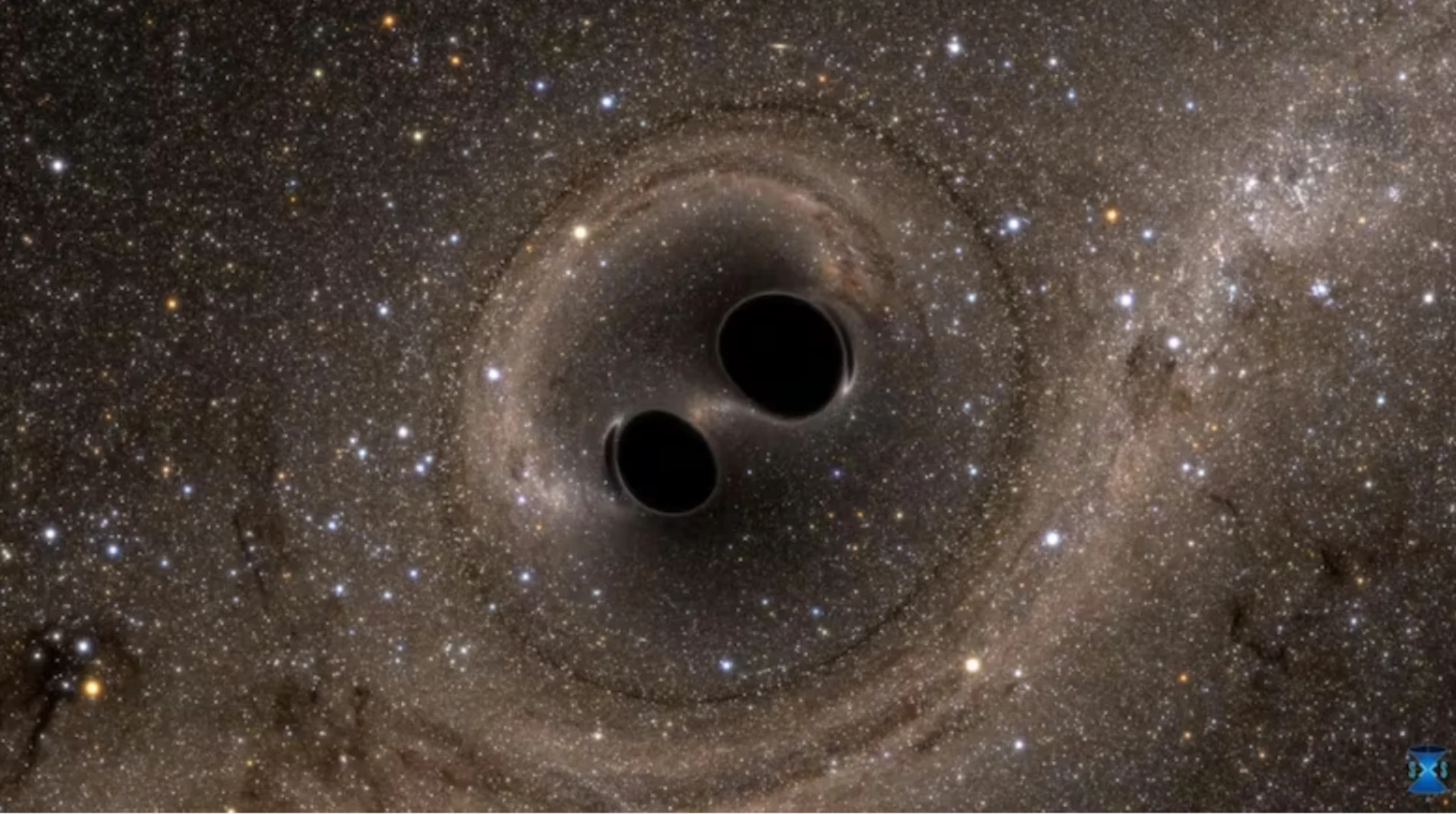
Scientists have detected the largest black hole merger yet. Why it matters
It was a bump in the night. A big one.
On Nov. 23, 2023, waves from a colossal merger of two black holes reached Earth and were picked up by the LIGO-Virgo-KAGRA Collaboration, a group that detects these sort of mergers through gravitational waves.
And these black holes were chunky, coming in at 100 and 140 times the mass of the sun.
But the final merger produced something even more impressive: another black hole that is more than 225 times the mass of the sun, astronomers revealed today.
Astronomers are excited about this merger because it's unusual. Most of these kinds of mergers detected thus far through gravitational waves have been between 10 and 40 times the sun, said Sophie Bini, a postdoctoral researcher at Caltech who is part of the group.
"We detected the first gravitational wave 10 years ago, and since then, we have already found more than 300 events. So it's really an exciting [time]," Bini said. "But this event in particular is very interesting because it's the most massive one."
Gravitational waves are ripples in space-time that can only be detected by extremely sensitive instruments, like the ones from the collaboration, which are located across the United States, Japan and Italy.
The first gravitational wave was detected in 2015 and announced by astronomers in 2016.
The other interesting discovery of this detection — called GW231123 — is that the pair appear to have been spinning extremely quickly.
"The black holes appear to be spinning very rapidly — near the limit allowed by [Albert] Einstein's theory of general relativity," Charlie Hoy at the University of Portsmouth said in a statement. "That makes the signal difficult to model and interpret. It's an excellent case study for pushing forward the development of our theoretical tools."
Understanding black holes
Not all black holes are created equal.
There are supermassive black holes that can be tens of thousands to billions of times the sun's mass and lie at the centre of galaxies. The Milky Way, for example, has a black hole at its centre, called Sagittarius A* — or Sgr A* — that is roughly four million times the mass of the sun.
Then there are stellar-mass black holes, which can be from a few times the mass of the sun to tens of times the mass. Or, some argue, a hundred of times its mass. These form when a massive star runs out of fuel and explodes in a spectacular fashion, an event called a supernova.
But then there are those that lie somewhere in between the two, called intermediate black holes. Finding these in-betweens has proved difficult for astronomers. This new merger lies within what astronomers call the "mass gap" between stellar-mass and supermassive black holes.
Gobbling up stars
It's not quite clear why these two black holes were so much heavier than what astronomers have previously detected. One theory is that each of the pair itself was the result of two black holes merging.
But that's not the only theory.
Priya Natarajan, professor of physics and the chair of astronomy at Yale University, studies supermassive black holes. Though these two black holes are piddly compared to the ones she studies, she says she is excited about the recent detection.
"I think this is super exciting for two reasons. First is the heaviness of the individual black holes before they actually merge," said Natarajan, who was not involved with the findings. "So the fact is that, you know, normal stellar processes that give you these stellar-mass remnant black holes, it's pretty hard to imagine, like, getting to 100 and 140 in one go."
But she has another theory on how these two unusual black holes could have formed.
In 2014, she co-authored a paper that suggested black holes could grow rapidly in the early universe by first going supernova and then by gobbling up stars in a nascent star cluster, à la Pac-Man. More gas means larger black holes. But she says in 2021, she realized this could happen later in the more recent universe, as well.
"The only thing that is different is there's not as much gas," she said. "So I actually showed that if there's not that much gas, you could start with something that's one or ten times the mass of the sun. It could maybe reach 100.… If there's little more gas, it could be 1,000."
So this new finding could open up a new avenue for cosmologists like herself to explore.
The next thing she'd like to see is a better way to locate these mergers. For the recent detection, there is an estimate that it occurred anywhere from two to 13 billion light years away.

Astronomers have revealed the largest black hole merger to date. This illustration shows how the merger would appear to our eyes if we could somehow travel in a spaceship for a closer look. (SXS, the Simulating eXtreme Spacetimes (SXS) project )
Now, why are these findings important?
It's about the human connection with the universe, Natarajan said.
"I think from the moment that as Neanderthals we stood upright and we were able to look at the night sky, we were fascinated with the regularity of the night sky, as well as the sort of cosmic drama that's going on, right? You see stars exploding, you see eclipses, you see night and day, you see seasonal changes. And I think it speaks to a fundamental curiosity that we as humans have," she said.
"I think that knowing our place in the universe is a question that's deeply fundamental to us. And it always has been."
This article, written by senior science writer Nicole Mortillaro, was originally published for CBC News on July 15.